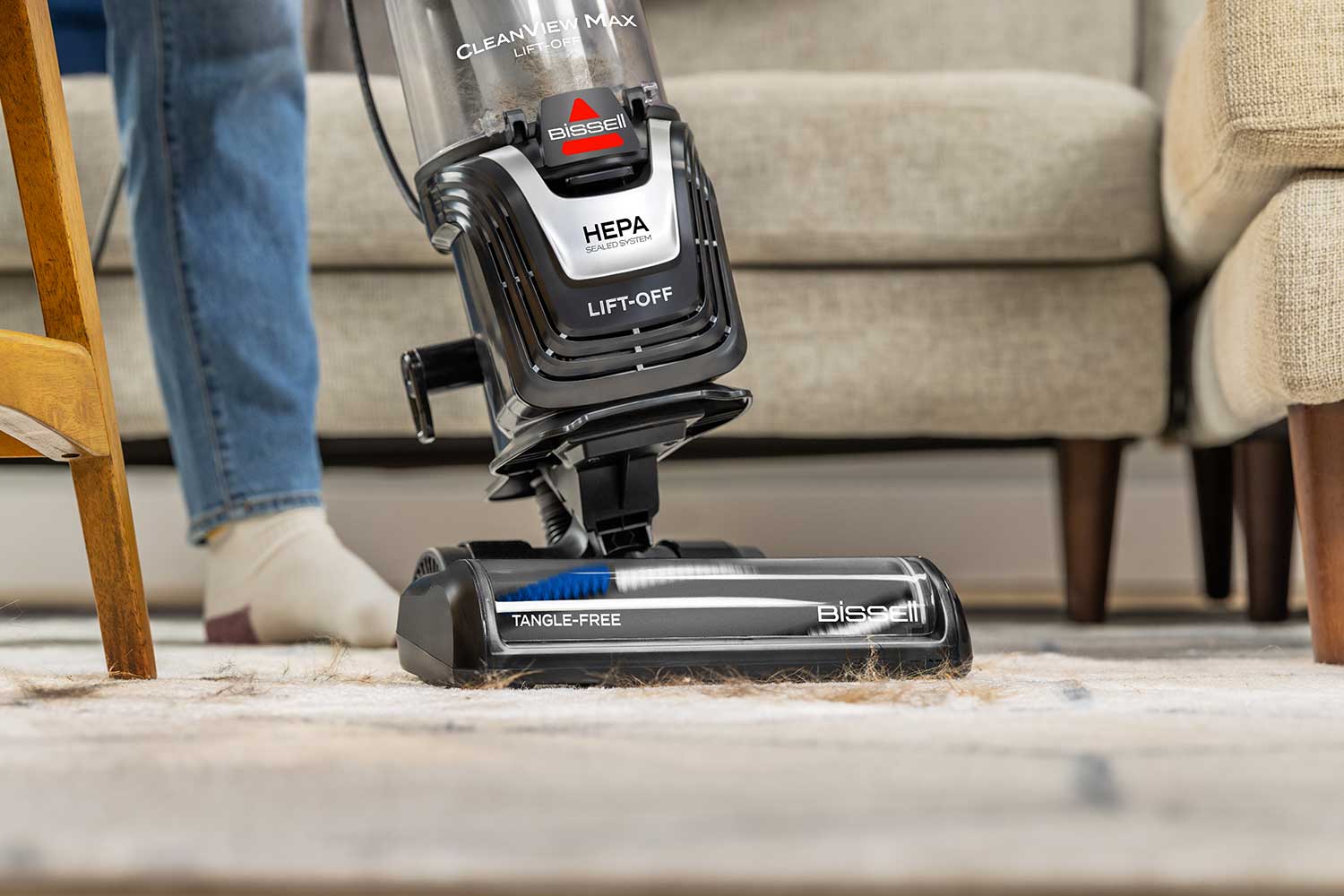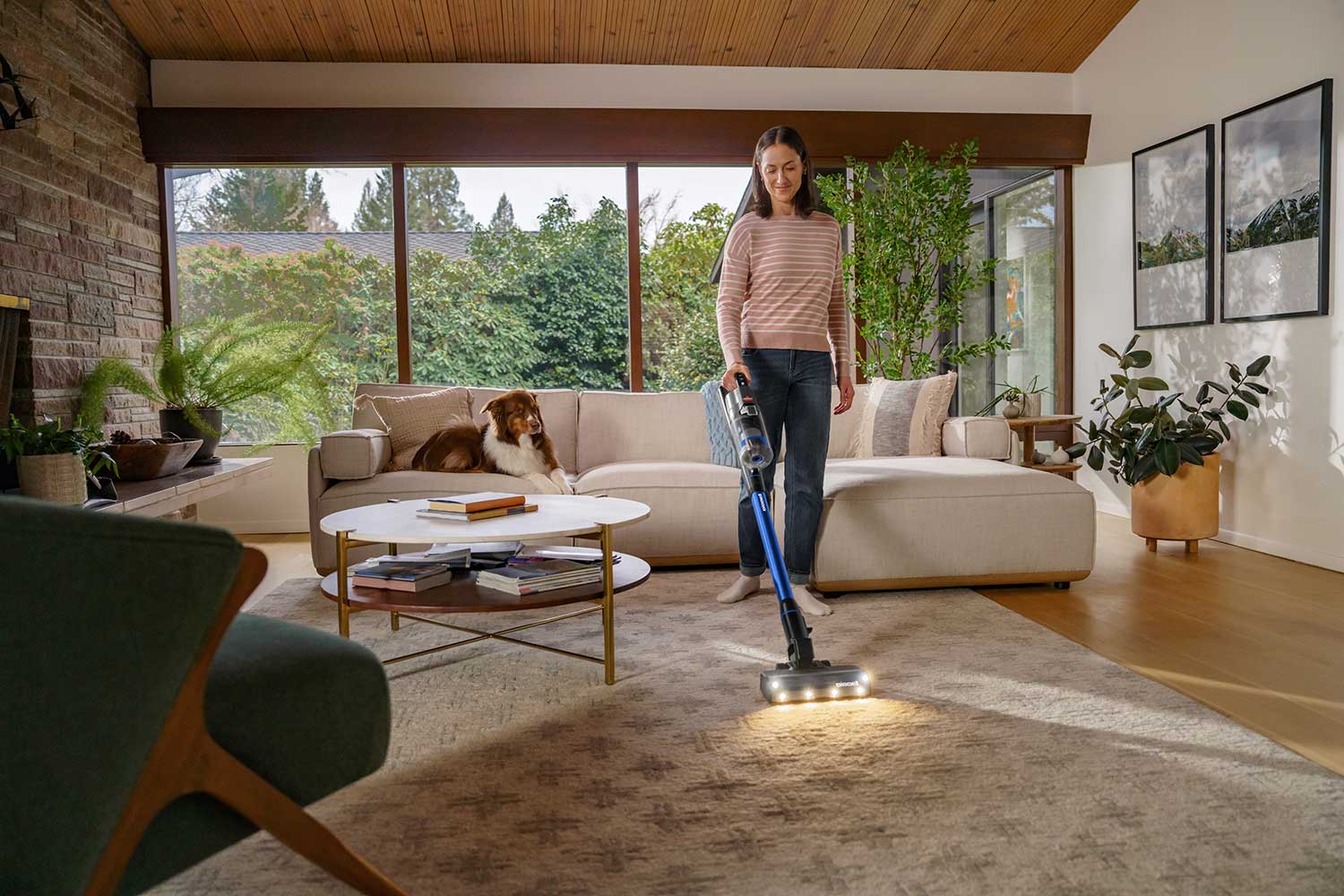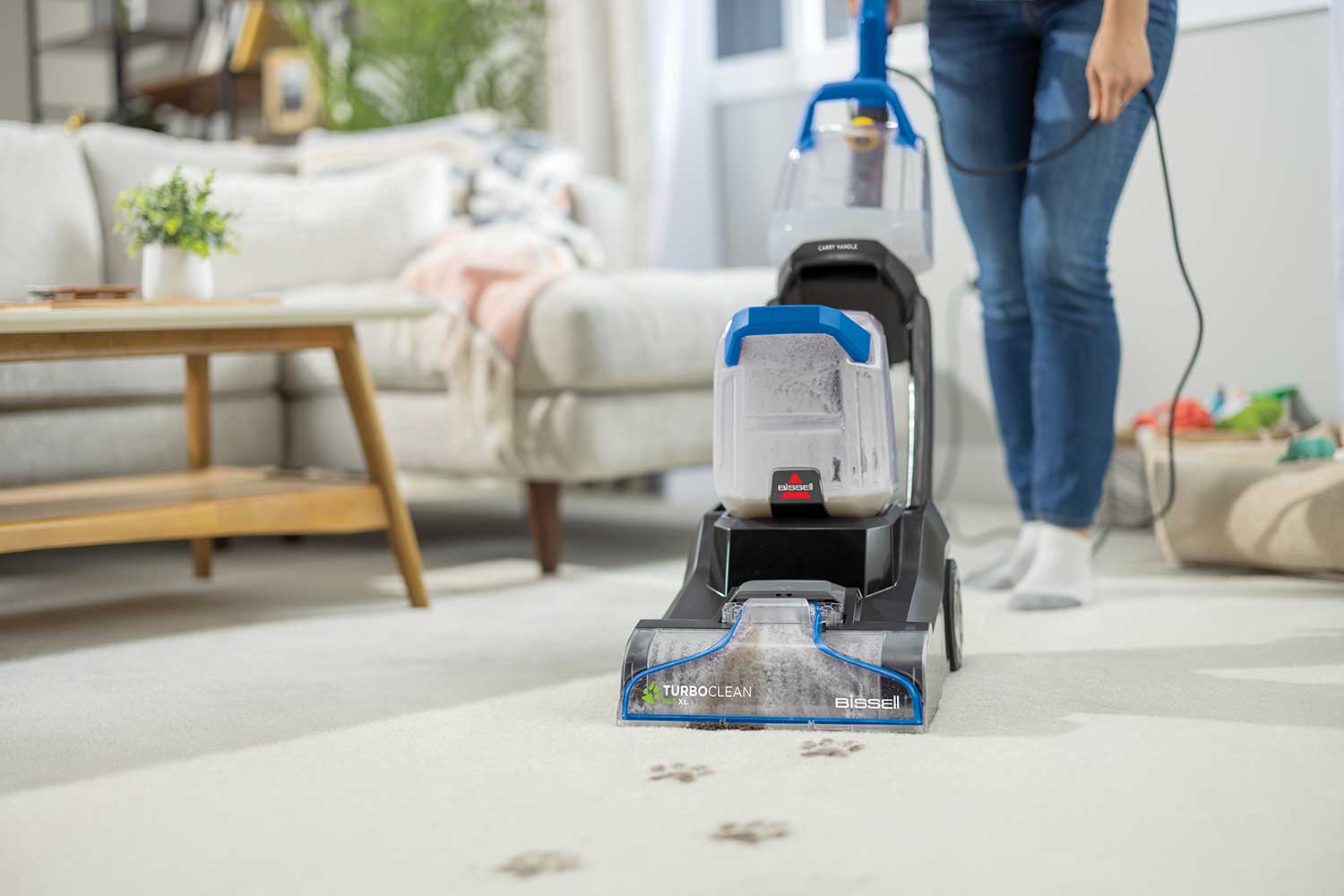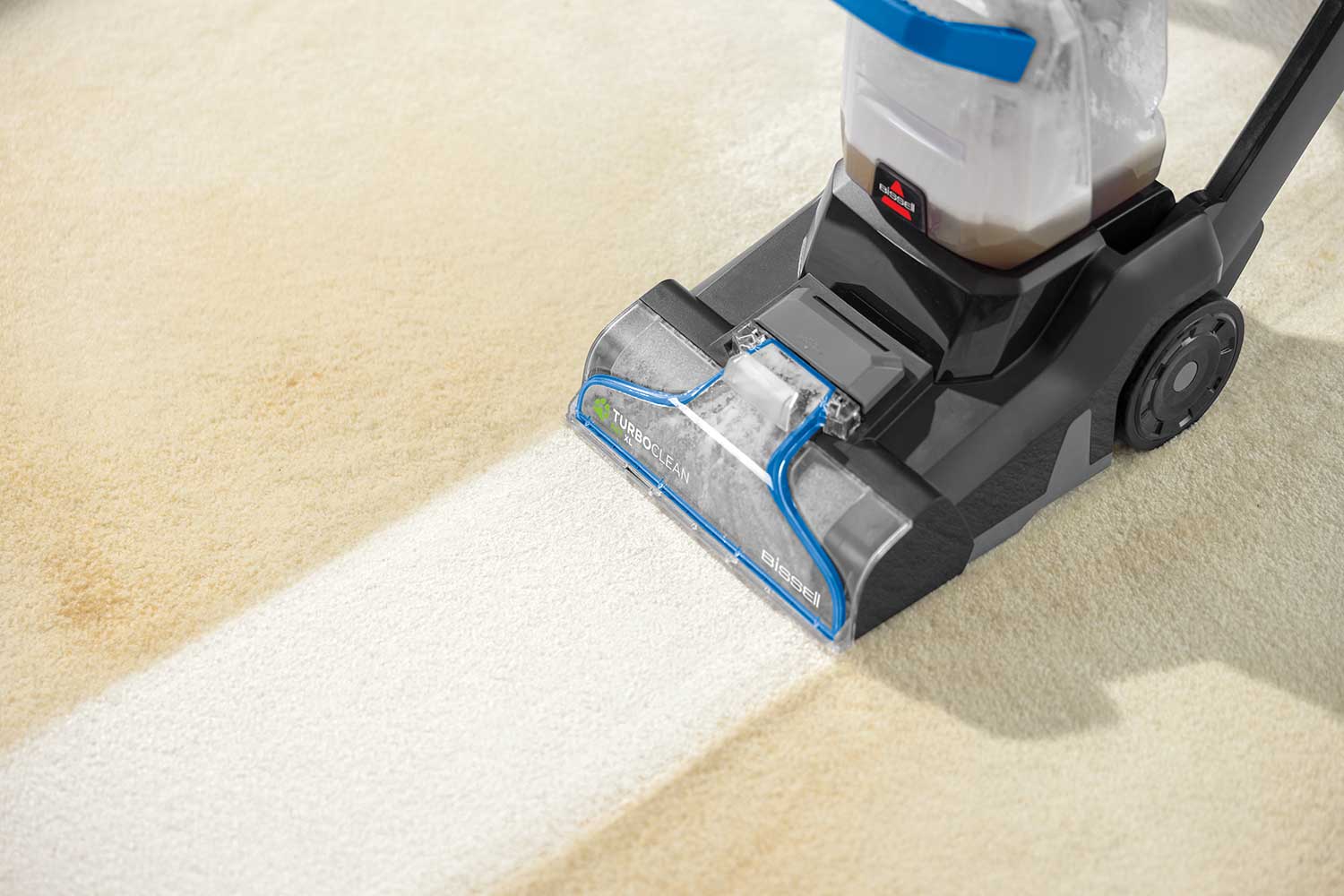How to Remove Pollen, Dust, Dander, and Dust Mite Matter Allergens from Carpet
Whether you’re worried about allergies or grime, vacuuming and deep cleaning your carpets is a proven way to extract microscopic particles like pet dander, pollen, dust mite waste, and dust which can quickly build up in carpeting. These nearly invisible bits of debris can trigger allergy symptoms. When left undisturbed, they can coat carpet, making it appear dirty and worn.

Whether you’re worried about allergies or grime, vacuuming and deep cleaning your carpets is a proven way to extract microscopic particles like pet dander, pollen, dust mite waste, and dust which can quickly build up in carpeting. These nearly invisible bits of debris can trigger allergy symptoms. When left undisturbed, they can coat carpet, making it appear dirty and worn.
Regular vacuuming with HEPA filtration products and scheduled deep cleanings can extend the life of your carpet and create a more hygienic and comfortable home. Those microscopic allergens and dirt will be removed from carpet fibers each time you vacuum; the HEPA filter will keep them from re-entering the air in your home, bringing extra relief to allergy sufferers.
In this comprehensive guide, our specialists provide detailed instructions for ridding your carpets of these problematic particles, including easy-to-follow cleaning tips and a recommended maintenance schedule designed to minimize dust, pollen, and dust mite debris accumulation.
Understanding household allergens
Before diving into cleaning methods, it's important to understand the common allergens hiding in your carpets and upholstery:
Dust mite debris: Dust mites are microscopic creatures that thrive in warm, humid environments. While invisible to the naked eye, their waste products and body fragments often build up in carpets, upholstery, and bedding, triggering allergic reactions in people.
Pet dander: Unlike pet hair, which is visible on the surface of carpet, the tiny flakes of skin shed by cats, dogs, and other furry animals can fall deep into carpet fibers. People who are allergic to pets are often most allergic to pet dander.
Pollen: Outdoor pollens easily attach to clothing and shoes or drift in through open windows and doors. This displaced pollen can exacerbate allergy symptoms among people taking cover indoors.
Household dust: A complex mixture of various particles including dead skin cells (which dust mites feed on), textile fibers, and outdoor soil tracked inside, dust can be a bit of a grab-bag of different potential allergens.
Common symptoms of exposure to pollen, dust mite debris, and pet dander

Exposure to carpet allergens can trigger various symptoms. If these symptoms improve when away from home but return indoors, the particles trapped in your carpets may be to blame. These include:
- Sneezing and runny nose
- Itchy, watery eyes
- Coughing or wheezing
- Skin irritation or rashes
- Worsened asthma symptoms
How to get rid of dust, pollen, dust mite matter, and other irritants in your home
As with most household tasks, proper preparation ensures effective carpet cleaning.
Upright vacuum with HEPA or SMARTSEAL® filtration

A vacuum with a highly efficient filter is essential for defending your home against tiny, irritating particles. HEPA filters capture 99.97% of particles as small as 0.3 microns, including microscopic dust mite debris, pollen, and pet dander allergens. Standard filters may not capture these at the same rate of efficiency, although some, such as our vacuums with SMARTSEAL® filtering systems, come very close. Without a highly efficient filter in place, your vacuum may pull in small particles, then release them right into the air – versus trap them in the dirt tank – increasing the chance of you breathing them in. (This article explains in greater detail why HEPA Sealed Allergen Systems are so effective.)
- We recommend the CleanView® Allergen Lift-Off® vacuum, which has a HEPA Sealed Allergen System and Lift-Off® detachable pod to help with cleaning upholstery too.
- If you prefer a stick vac, the PowerClean® FurFinder™ Stick Vac has a similar HEPA filtration system and 3-in-1 capabilities.
Upright carpet cleaner
Deep cleaning carpet every three to six months can help reduce the buildup of dust and particles such as pet dander. It will also give you a chance to focus on refreshing high-traffic areas and washing away any discoloration or staining.
- The TurboClean™ Pet XL upright carpet and upholstery cleaner easily lifts, removes, and cleans embedded pet stains, dirt, and dander allergens.
Formula
- BISSELL® PET PRO OXY Urine Eliminator formula removes tough pet odors and stubborn stains with the power of OXY. OXY-based cleaning formulas utilize active oxygen to break down stains, with oxygen free-radicals decolorizing the stain for easier removal.
- BISSELL® PET Stain & Odour formula deep cleans without heavy metals, phosphates, or dyes. StainProtect™ Technology prevents future stains on carpet.
Additional allergen-fighting tool
- Air purifiers with HEPA filtration to capture airborne particles during cleaning (and in between cleanings).
Weekly carpet cleaning instructions

Maintaining a weekly carpet vacuuming routine significantly reduces dust, pollen, and debris buildup and keeps your home fresher and healthier. When you clean with a vacuum with a HEPA Sealed Allergen System, you’ll lift particles into the dirt tank and ensure they stay there. (Vacuums without HEPA filters may release some of the small particles back into the air, which can exacerbate allergies.)
Step 1: Move lightweight furniture
Begin by relocating smaller furniture pieces like coffee tables, ottomans, and floor lamps to expose as much carpet as possible. Consider moving an air purifier into the room before starting this process to help capture any small particles that become airborne when furniture is moved.
Step 2: Vacuum thoroughly with HEPA or SMARTSEAL® filtration
Using your HEPA- or SMARTSEAL®-filtered vacuum, methodically clean all carpeted areas, paying special attention to:
- High-traffic zones where dust allergens can accumulate
- Edges and corners where dust typically collects
- Places your pets frequent, which may have a buildup of hair and dander allergens
- Transition areas, windows, and doorways where pollen first enters the home
For maximum allergen removal, vacuum slowly and deliberately, making multiple passes in different directions. This technique ensures the spinning brush roll makes contact with all areas of the carpet, kicking up the most sunk particles for removal.
Step 3: Maintain your vacuum and filter
After you finish vacuuming:
- Empty the vacuum dirt tank into a waste bin with a lid – or better yet, your outdoor garbage can – to prevent particles from floating back into your space.
- Check and clean the vacuum's HEPA or SMARTSEAL® filter (and, when applicable, the “pre-filter” piece of foam) according to manufacturer instructions. Cleaning directions and replacement times are unique to each filter. This information is usually on individual vacuum product pages and the customer support website[JC1] .
- Check brush rolls and remove any hair or fibers.
- Inspect hoses and attachments for clogs.
Proper vacuum maintenance ensures consistent performance and can extend the life of your cleaning equipment. For instance, filters with lots of buildup can reduce overall suction and cleaning performance.
Semi-annual carpet deep cleaning instructions

While weekly vacuuming can effectively control dust, dander allergens, and pollen buildup, a thorough deep cleaning at least twice a year will remove stubborn, embedded particles and give your carpet a general refresh.
Step 1: Move furniture
Begin by clearing away all lightweight furniture, such as tables and chairs. For rooms with heavier items – like couches and beds – consider cleaning in segments, fully addressing one section then moving bulky items there and continuing to clean. Less frequently vacuumed areas often harbor a lot of dust and dust mite debris, so you may want to position an air purifier in the room before you even start moving furniture around. Once particles are airborne, they take time to settle, so there’s no guarantee you’ll be able to vacuum them up right away.
Step 2: Vacuum debris
Next, use your HEPA- or SMARTSEAL®- filtered vacuum cleaner to extract loose dirt, pollen, dust, and other microscopic debris from carpets, giving special attention to high-traffic zones and corners. For maximum allergen removal, vacuum slowly and methodically, making multiple passes in different directions. Always vacuum at least once before deep cleaning your carpet.
Step 3: Pretreat problem areas
If you see any visible stains, apply a pretreating spray to make the stains easier to remove with your upright deep cleaner. We like BISSELL® Sanitize Pretreat Formula.
Step 4: Select your formula and fill your machine
Prep your carpet cleaner, following the instructions provided on your device and formula bottle. For instance, you might add clean, warm water up to the designated fill line of your carpet cleaner, then incorporate formula until it reaches the secondary line (formula line).
Step 5: Deep clean your carpets
Start cleaning the corner opposite from the doorway, pressing the formula trigger as you move forward and releasing it as you pull the vacuum back. The forward pass distributes cleaning solution into the carpet fibers. As you pull the machine back, the used formula and dislodged debris and particles are extracted. During both passes, the brush rolls actively agitate the carpet, removing embedded dirt, dander allergens, and stains. You may want to do go over the carpet twice for maximum removal.
Pro tip: Count “one-two” for each step taken. This gives your carpet cleaner enough time to clean an area and extract maximum moisture.

Step 6: Speed up your carpet drying time
Drying time varies based on your carpet type and thickness, selected cleaning mode, and number of passes, among other factors. Generally, we suggest waiting four to six hours before walking on deep-cleaned carpet. However, complete drying may require up to 24 hours.
To speed up carpet dry time, consider these methods:
- Use quick dry mode: Certain carpet cleaners, like the Revolution® HydroSteam™ Pet deep cleaner, feature a quick dry setting that dispenses less formula, allowing carpets to dry more rapidly.
- Make additional passes without spraying formula: Your carpet cleaner's suction operates continuously when the machine is powered on. Extra passes over the carpet (without activating the spray trigger) help remove excess moisture.
- Open your windows: Creating airflow by opening windows helps dry carpet by reducing air moisture and establishing a cross-breeze. But, use caution: avoid opening windows on high pollen days.
- Turn on the heat or A/C: Your home's climate control system can accelerate carpet drying and reduce humidity.
Step 7: Vacuum once more
Once your carpet has completely dried, vacuum the entire area again with your HEPA-filter vacuum to restore the carpet's texture and capture any dislodged particles.
Step 8: Prepare your vacuum and carpet cleaner for storage
Before putting away your vacuum cleaner, follow the vacuum cleanup steps above in the weekly carpet cleaning instructions.
To prepare your carpet cleaner for storage and ensures it's ready for future use, be sure to:
- Empty the dirty water tank into a utility sink and rinse thoroughly.
- Remove the plastic brush roll cover and rinse it with water. Use the nozzle clean-out tool to clear any lingering hair or debris.
- Examine the brush roll chamber. Remove any hair or debris from the brush rolls and rinse under running water.
- Position the carpet cleaner on its back and inspect for clogs in the hose mouth or sprayers.
- After ensuring all pathways are clear and components are dry, reassemble the machine.
- Wrap the cord for storage and place the machine in a protected, dry location.
Ways to minimize particle buildup in your home
Maintaining a low-allergen home environment extends beyond regular cleaning. Consider these additional strategies for long-term allergen management:
Consider allergen-proof coverings
Encasing mattresses, pillows, and cushions in tightly-woven, allergen-proof covers can keep dust mites settling in. These specially designed cases also block microscopic particles such as dust allergens and pollen from getting into your soft furnishings.
Manage indoor air quality
Air purifiers with HEPA filtration can capture airborne allergen particles, including dust mite debris and pollen, providing additional relief between deep cleanings. Placing purifiers in bedrooms and frequently-used living spaces brings the greatest benefit.